Article
Spectroscopy
Spectroscopy
Product Resources
Product Resources
UV–vis–NIR system
The Cary 7000 Universal Measurement spectrophotometer from Agilent Technologies is designed to provide measurements of transmission, absolute reflection, and scattering without moving the sample. According to the company, the system is automated and provides 10 absorbance unit capability.
Agilent Technologies, Santa Clara, CA;
www.agilent.com/chem/cary7000UMS

Application note for diesel analysis
An application note from Applied Rigaku Technologies describes the measurement of sulfur in ultralow-sulfur diesel using the company's NEX QC+ high-resolution benchtop EDXRF analyzer. The analysis reportedly complies with standard test method ISO 13032.
Applied Rigaku Technologies, Austin, TX;
www.rigakuedxrf.com/edxrf/app-notes.html?id=1272_AppNote
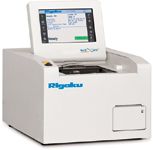
Mercury in groundwater application note
An application note from CETAC Technologies compares two methods for measuring mercury in groundwater: EPA 245.7 and ISO 17852. The note describes how both methods were implemented using the company's QuickTrace M-8000 cold vapor atomic flu...orescence analyzer. The results discussed in the publication reportedly indicate more accurate response and lower MDL for the ISO method, attributed to the way the method reduces excess bromine.
CETAC Technologies, Omaha, NE;
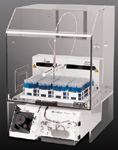
Cylindrical and flat optics
Certified cylindrical and flat optics from Hellma are designed with radii ranging from 10 mm to 5 m with sizes up to 1 m. According to the company, flats include wedges, prisms, beam splitters, corner cubes, windows, and mirrors.
Hellma USA, Inc., Plainview, NY;
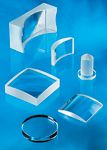
Energy dispersive spectroscopy detectors
Silicon drift detectors for energy dispersive spectroscopy from Amptek are designed for use with scanning electron microscopes. According to the company, the low energy response of the detectors extends down to carbon, and the systems are suitable for laboratory and field use and for original equipment manufacturers developing tabletop or handheld XRF analyzers.
Amptek, Inc., Bedford, MA;

Multichannel spectrometers
Multichannel spectrometers from Avantes combine up to 10 spectrometers into one housing in a standard 19–in. rack mount, with the opportunity to combine all into a single output spectrum. According to the company, the total number of spectrometers connected to a single computer is limited only by USB, memory, or the processor limitations of the host computer.
Avantes, Broomfield, CO;
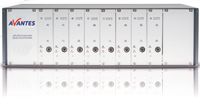
ICP sample uptake monitor
The TruFlo device from Glass Expansion is designed to digitally and graphically display the sample flow rate to an ICP-OES or ICP-MS nebulizer. According to the company, an alarm sounds when deviation from specified flow rates occurs, the monitor can be calibrated for a variety of solvents, and the device is available in flow ranges from 0.001 to 4.0 mL/min in both standard and HF-resistant models.
Glass Expansion, Pocasset, MA;
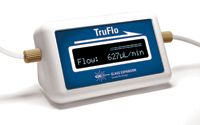
Absorbance and fluorescence system
The Aqualog simultaneous absorbance and fluorescence system from Horiba Scientific is designed to measure colored dissolved organic matter in water 100 times faster than previous fluorescence methods. According to the company, the system offers a lower absorbance and fluorescence excitation wavelengths down to 200 nm and extended emission coverage up to 800 nm.
Horiba Scientific, Edison, NJ;

Database
The PDF-4+ 2013 database from ICDD is designed to provide comprehensive material coverage for inorganic materials with 340,653 entries. According to the company, the database supports automated quantitative analyses by providing key reference data required for these analyses.
ICDD, Newtown Square, PA;
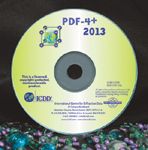
EDS detector windows
The AP5 EDS detector window for light element detection from Moxtek is designed with an ultrathin polymer film to provide maximum transmission of low energy X-rays with zero visible light leaks. According to the company, the window can be used in applications where light element detection is important and beryllium windows are ineffective.
Moxtek, Orem, UT.

X-ray scattering module
The ScatterX78 module from Panalytical is designed to acquire high-quality small- and wide-angle X-ray scattering data in an angular range from 0.08 to 78 degrees. According to the company, the module consists of a vacuum chamber that houses beam collimation elements, a sample capsule, and a beamstop. The module reportedly requires no alignment by the user.
Panalytical, Westborough, MA;
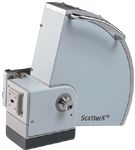
Optical parametric oscillator
The Oria IR optical parametric oscillator from Radiantis is designed as a sealed, hands-free, fully automated femtosecond system that provides wavelength coverage with high average power in the near- and mid-IR. According to the company, the oscillator is compatible with standard femtosecond MHz Ti: sapphire oscillators and is suitable for nonlinear microscopy applications where short pulse durations, high beam pointing, and high power stability are required in the IR.
Radiantis, Barcelona, Spain;
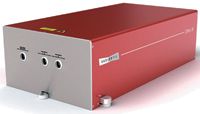
LED sources
Fiber-coupled LED sources from Mightex are designed to combine up to eight LEDs into one fiber with high efficiency without any moving parts in the optical path, with wavelengths ranging from 240 nm to 940 nm. According to the company, the LEDs can be controlled, switched, or dimmed individually or in any combination.
Mightex, Pleasanton, CA;
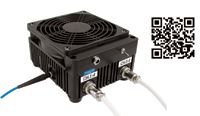
Handheld Raman spectrometer
The IDRaman mini handheld Raman spectrometer from Ocean Optics is designed for applications ranging from chemical and explosives agent detection in the field to quality assurance and quality control sampling routines in the laboratory. According to the company, the spectrometer measures 3.6 × 2.8 × 1.5 in., weighs 11 oz, and uses two AA batteries.
Ocean Optics, Dunedin, FL;
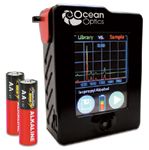
ATR accessory
The GladiATR accessory from PIKE Technologies is designed with expanded temperature control options. According to the company, the single reflection diamond ATR accessory can be configured for heating up to 300 °C and used for high-temperature kinetic or material degradation studies.
PIKE Technologies, Madison, WI;
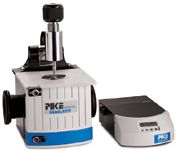
Silicon drift detectors
The XRF200i compact silicon drift detectors from SGX Sensortech (MA) are designed for OEM benchtop XRF applications. According to the company, the detectors are available with active areas ranging from 10 mm2 to 100 mm2.
SGX Sensortech (MA) Ltd., High Wycombe, UK;

Knife mills
Retsch's Grindomix GM 300 knife mills are designed for food sample preparation. According to the company, the mills homogenize quantities of up to 4.5 L and process substances with a high water, oil, or fat content as quickly and reliably as dry, soft, medium-hard, and fibrous products.
Retsch, Inc., Newtown, PA;

Detector
Andor's iDus LDC-DD 416 platform is designed to provide a combination of low dark noise and high QE. According to the company, the detector is suitable for NIR, Raman, and photoluminescence and can reduce acquisition times, removing the need for liquid nitrogen cooling.
Andor Technology, South Windsor, CT;
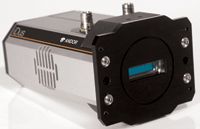
Confocal Raman microscope
Horiba Scientific's XploRA One Raman microscope is designed for QA–QC and analytical laboratories in the industrial and routine analytical sectors. According to the company, the microscope's user interface is powered by its LabSpec 6 software.
Horiba Scientific, Edison, NJ;
www.horiba.com/us/en/scientific/marketing-us/xplora-one/
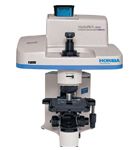
Data reviewing and sharing iPad app
The Thermo Scientific NanoDrop user application for iPad is designed to enable users of the company's NanoDrop instruments to take sample data on the go. According to the company, the app allows users to import and view data, and compare concentration, purity, and spectral information.
Thermo Fisher Scientific, San Jose, CA;
www.thermoscientific.com/nanodropapp
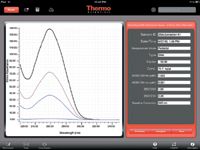
PVC and PE solid reference materials
Solid reference materials from SPEX CertiPrep include phthalates in PVC matrix. According to the company, polyethylene standards are also available to customers in the plastics market.
SPEX CertiPrep, Metuchen, NJ;

Laboratory-based LIBS analyzers
ChemScan laboratory-based analyzers from TSI are designed to use laser-induced breakdown spectroscopy to provide identification of materials and chemical composition of solids. According to the company, the analyzers are equipped with the company's ChemLytics software.
TSI Incorporated, St. Paul, MN;

Raman spectrometer
B&W Tek's i-Raman Plus portable Raman spectrometer is designed with a high-efficiency back-thinned CCD detector with deep TE cooling and high dynamic range. According to the company, the spectrometer provides an improved signal-to-noise ratio for up to 30 min of integration time, allowing for measurement of weak Raman signals.
B&W Tek, Newark, DE;
www.bwtek.com/products/i-raman-plus/
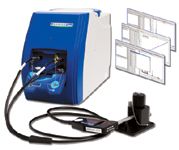
EDXRF spectrometer
Shimadzu's EDX-LE energy dispersive X-ray fluorescence spectrometer is designed for screening elements regulated by RoHS/ELV directives. According to the company, the spectrometer is equipped with automated analysis functions and a detector that does not require liquid nitrogen.
Shimadzu Scientific Instruments, Columbia, MD;
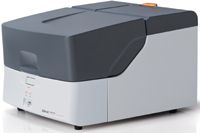
Silicon drift detector
EDAX's thermoelectrically cooled 50-mm2 silicon drift detector is designed for use in its Orbis micro-XRF elemental analyzer system for high-resolution spectral acquisition. According to the company, the system can be useful for those who make measurements on small fragments, coatings and deposits on thin substrates (such as ink on paper), biological samples, and trace element analysis using heavy filters to improve sensitivity.
EDAX, Mahwah, NJ;
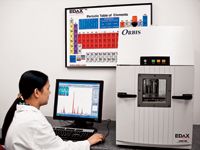
Raman analyzers
The ProRaman-L series Raman spectrometers from Enwave Optronics are designed to provide measurement capability down to low parts-per-million levels. According to the company, the instruments are suitable for process analytical method developments and other measurements requiring high sensitivity and high speed analysis.
Enwave Optronics, Inc., Irvine, CA;
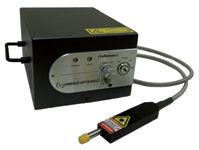
Photovoltaic measurement system
Newport Corporation's Oriel IQE-200 photovoltaic cell measurement system is designed for simultaneous measurement of the external and internal quantum efficiency of solar cells, detectors, and other photon-to-charge converting devices. The system reportedly splits the beam to allow for concurrent measurements. The system includes a light source, a monochromator, and related electronics and software. According to the company, the system can be used for the measurement of silicon-based cells, amorphous andmono/poly crystalline, thin-film cells, copper indium gallium diselenide, and cadmium telluride.
Newport Corporation, Irvine, CA;
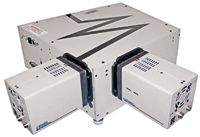
Mercury analyzer
The RA-4500 mercury analyzer from Nippon Instruments is designed to fully automate the sample digestion and analysis for mercury in wasterwaters, drinking water, and other aqueous samples. According to the company, features include NIST-traceable temperature logging, a color sensor for potassium permanganate verification, and a built-in exhaust system.
Nippon Instruments North America, College Station, TX;
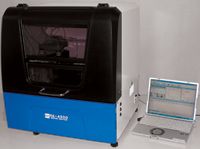
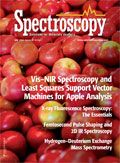
Newsletter
Get essential updates on the latest spectroscopy technologies, regulatory standards, and best practices—subscribe today to Spectroscopy.




